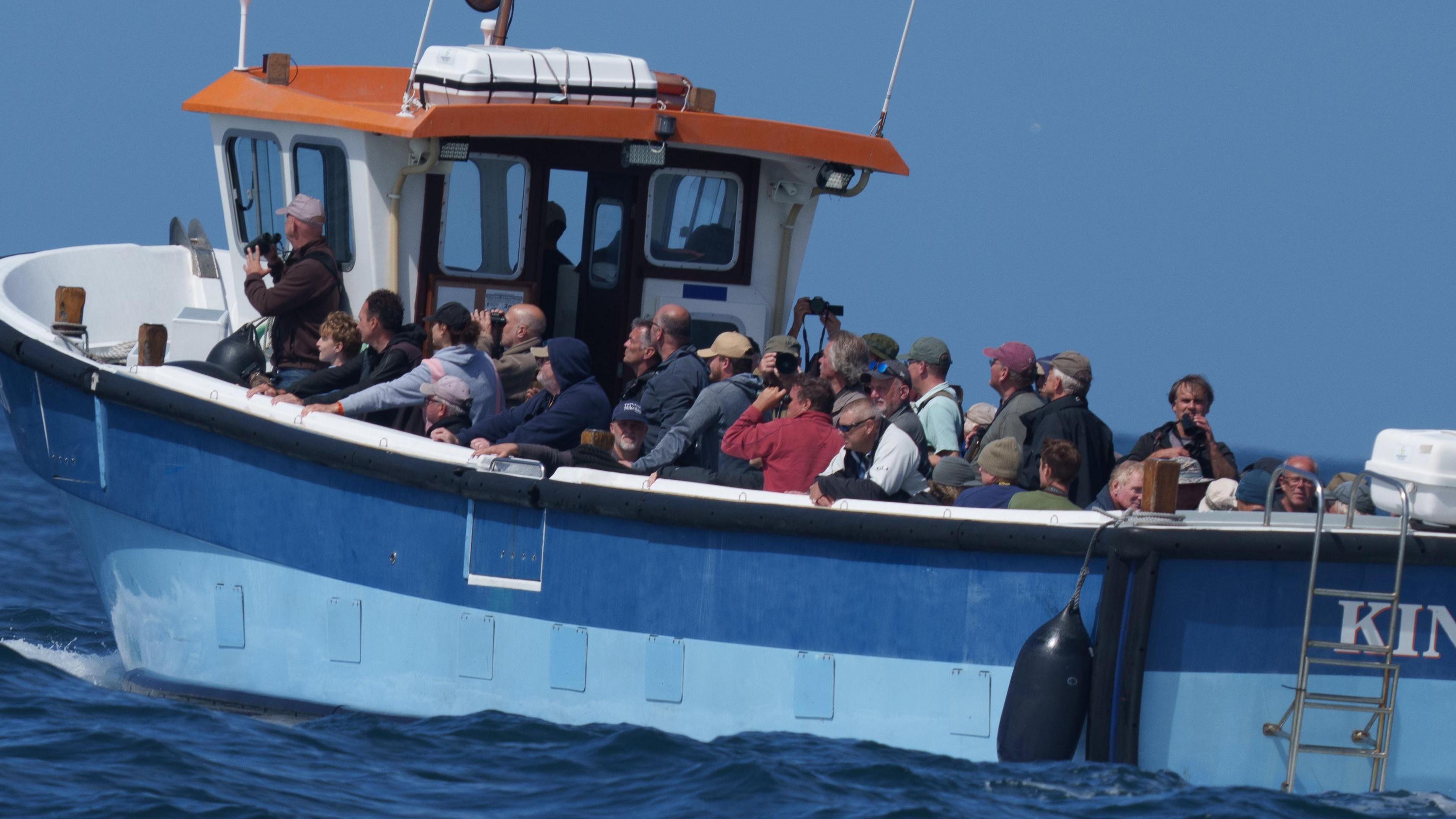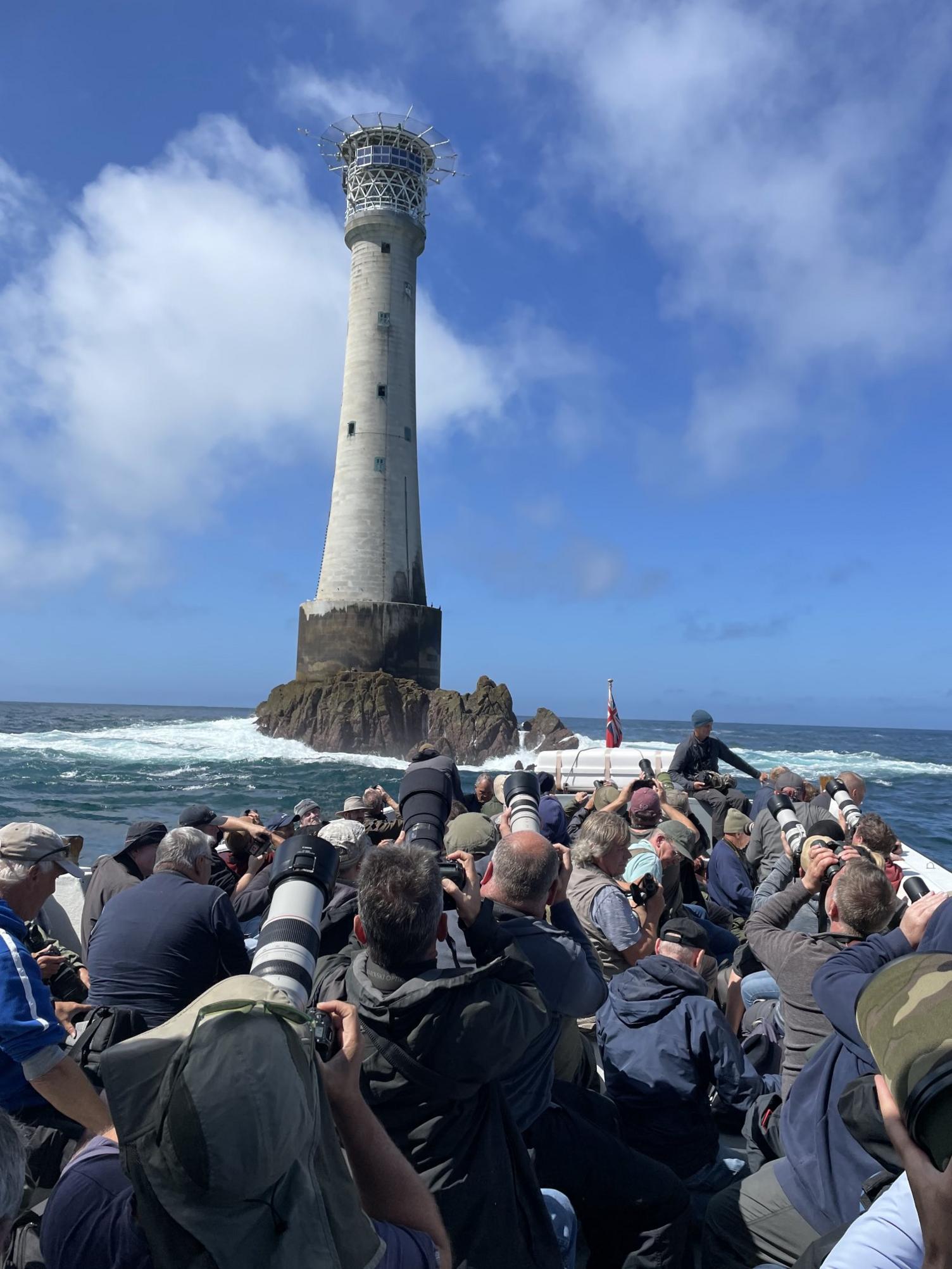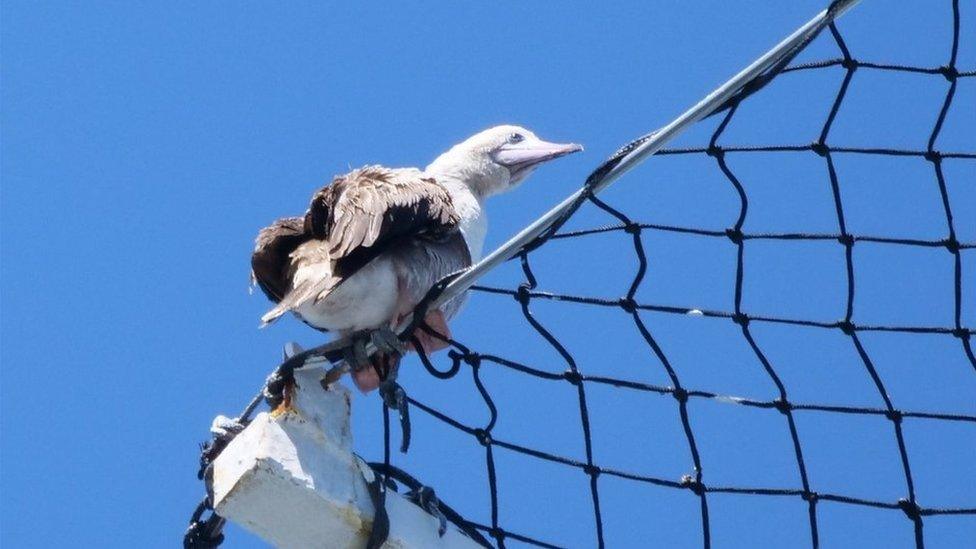Hundreds flock to Isles of Scilly for rare seabird

Hundreds of people flocked to the Isles of Scilly to see the rare bird on a lighthouse
At a glance
About 400 birdwatchers visit the Isles of Scilly where a rare seabird has been perched on a lighthouse
It was spotted earlier in August by a tour boat visiting Bishop Rock Lighthouse
Joe Pender, skipper of the boat Scilly Pelagics, says if the bird stays in the area, the islands "will get a steady stream of birders over the coming weeks"
- Published

The seabird is native to the Galápagos Islands
About 400 birdwatchers from across the country have visited the Isles of Scilly this month to catch a glimpse of a rare tropical bird recorded only once before in the UK.
The red-footed booby, a seabird native to the Galápagos Islands, was spotted earlier in August by on Bishop Rock Lighthouse, about four miles (6.5km) west of Scilly.
Joe Pender, skipper of the boat Scilly Pelagics, said people had flocked from far and wide since to see the rare bird.
He said: "I would imagine that if the red-footed booby stays for a while, we will get a steady stream of birders over the coming weeks."

Bird watchers went to Bishop Rock lighthouse to catch a glimpse of the bird

More visitors are expected if the bird hangs around
He added: "We have had around 400 birdwatchers from all over the UK visit the Bishop Rock to see the red-footed booby since Tuesday, [and] about 140 came over yesterday [Sunday] on a day trip to see it."
Three boats usually used to take people between the inhabited islands in Scilly were taken to the lighthouse to give people the chance of a sighting.
Ross Newham, one of the birdwatchers who went to see the bird, said: "What a wonderfully crazy hobby this is!"

The rare bird has been seen on the top of a lighthouse
The red-footed booby
The red-footed booby is a relative of the gannet, but this species breeds on tropical islands like the Galapagos, the BTO said
The National Geographic said red-footed boobies do not usually migrate, living year-round in tropical or sub-tropical areas
They feed at sea and nest on the ground, while also perching in coastal trees and shrubs
They are the smallest of more than six species of booby
The species appear in a variety of colour morphs but all have red feet, which gives them their name
Source: National Geographic/BTO
Follow BBC News South West on Twitter, external, Facebook, external and Instagram, external. Send your story ideas to spotlight@bbc.co.uk, external.
Related topics
Related stories
- Published16 August 2023
